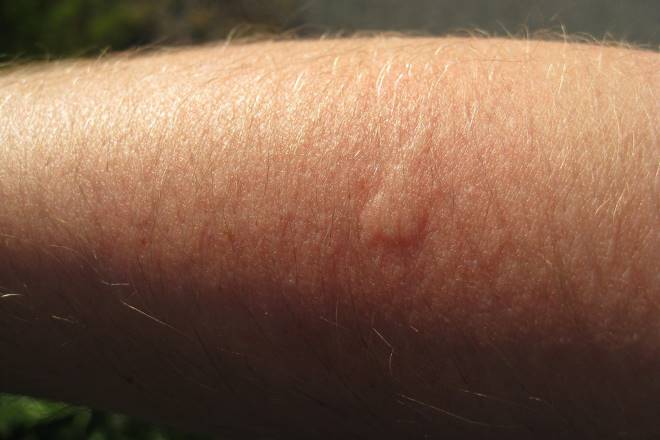Allergy Treatment: Recognizing and Managing Swelling and Reactions
Allergic reactions can range from mild irritation to life-threatening emergencies. Understanding common signs, immediate self-care, and available medical treatments helps people respond appropriately when symptoms appear. This article explains causes and treatments for swelling and reactions that affect the skin, face, lips, and tongue, and outlines when to seek professional care and local services for ongoing management.

This article is for informational purposes only and should not be considered medical advice. Please consult a qualified healthcare professional for personalized guidance and treatment.
What causes swelling in allergic reactions?
Swelling (angioedema) occurs when the immune system releases chemicals like histamine in response to an allergen, increasing blood vessel permeability and fluid leakage into tissues. Common triggers include foods, insect stings, medications, and environmental allergens. Swelling may appear within minutes to hours and often affects soft tissues such as eyelids, lips, and the throat. Immediate management typically involves stopping exposure to the trigger, taking an oral antihistamine for mild cases, and seeking urgent care if swelling progresses rapidly or is accompanied by breathing difficulty, dizziness, or fainting.
How are skin reactions treated?
Allergic skin reactions — such as hives, rash, or itchy patches — are commonly treated with non-prescription or prescription antihistamines that reduce itching and histamine-mediated symptoms. Topical corticosteroid creams can help localized inflammation, while emollients soothe dry or irritated skin. For persistent or widespread dermatitis, a clinician may prescribe systemic corticosteroids for a short course. Identifying and avoiding the triggering agent is essential; a dermatologist or allergist can assist with patch testing or other diagnostic methods to pinpoint contact allergens and recommend skin-care strategies to reduce recurrence.
When swelling affects the face, what should you do?
Facial swelling can be alarming because it may signal progression toward airway involvement. For mild facial swelling without breathing or swallowing difficulty, start with oral antihistamines and cool compresses, and monitor closely for worsening. If facial swelling is sudden, prominent, or associated with respiratory symptoms, call emergency services or go to the nearest emergency department, as this could indicate anaphylaxis. In follow-up care, an allergist can evaluate triggers, recommend avoidance measures, and consider prescribing an epinephrine auto-injector if the person is at risk for severe reactions in the future.
What treatments apply to swollen lips in allergies?
Swollen lips are a frequent manifestation of angioedema or contact reactions. For mild cases, oral antihistamines and topical soothing agents (such as emollients) can reduce discomfort. Avoidance of known irritants—certain cosmetics, dental products, or foods—is important. If the lips swell rapidly, impair breathing, or are part of a systemic reaction, emergency treatment with intramuscular epinephrine and airway support may be necessary. For recurrent lip swelling, an allergist can perform targeted testing and discuss longer-term options such as immunotherapy or medication adjustments if a drug or food is implicated.
How serious is tongue swelling and how is it treated?
Tongue swelling is more concerning than swelling in other areas because it can narrow the airway and impair breathing or swallowing. Immediate steps include seeking emergency medical care. If available and advised, administer intramuscular epinephrine for suspected anaphylaxis while emergency services are en route. In hospital settings, treatment can include supplemental oxygen, antihistamines, corticosteroids, and airway management if needed. After stabilization, specialists investigate the cause and may recommend carrying an epinephrine auto-injector, making dietary or medication changes, and arranging follow-up with an allergist for testing and prevention planning.
Follow-up care and longer-term treatments
After an acute episode is managed, follow-up care focuses on identifying triggers and reducing future risk. Allergy testing (skin prick tests or blood tests) can help identify specific sensitivities. For certain inhalant or insect-sting allergies, allergen immunotherapy (shots or sublingual tablets) may be an option to reduce reactivity over time. Medication review is important when drugs are the suspected cause; clinicians may recommend alternatives. Local services, including allergy clinics and dermatology practices in your area, can assist with testing, treatment plans, and patient education to minimize recurrence.
Conclusion
Allergic swelling affecting the skin, face, lips, or tongue requires prompt assessment to determine severity and appropriate treatment. Mild cases often respond to antihistamines and topical therapies, while sudden or progressive swelling—especially involving the tongue or face with breathing changes—requires emergency care and possible epinephrine. Long-term management includes trigger identification, avoidance strategies, and specialist follow-up to reduce future risk and improve quality of life.






